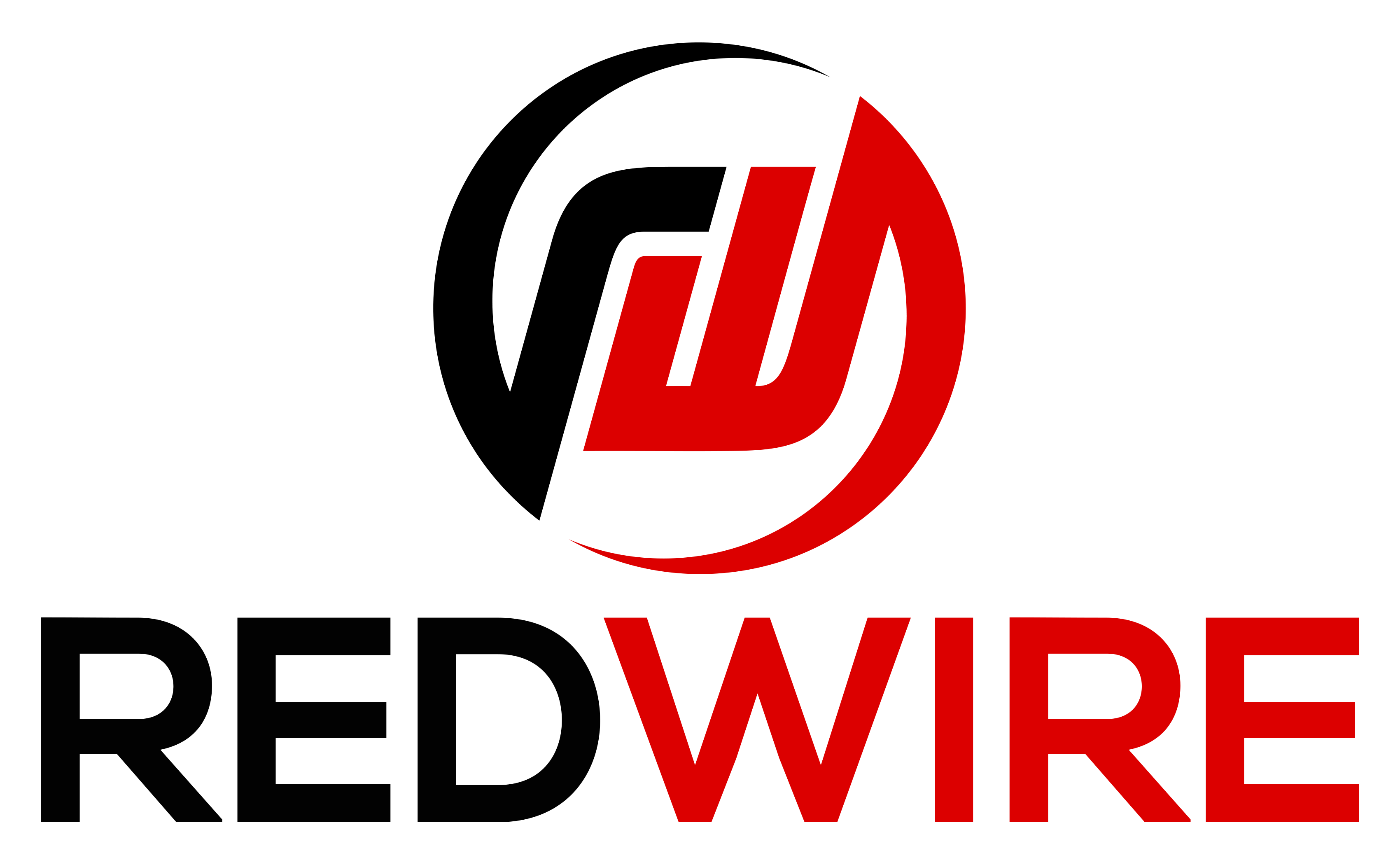The space exploration industry is changing quickly, which makes now an exciting time to invest in the industry.
It is no longer just a destination for astronauts or a playground for billionaire entrepreneurs.
In 2025, the commercial space industry is booming with innovation, investment, and opportunity. Whether you’re looking for explosive growth, steady contract revenue, or speculative moonshots, space stocks have the answer.
In this article, we break down the 9 best space stocks that are publicly traded to consider in 2025.
TL;DR: Best Space Stocks To Watch
- Rocket Lab (RKLB): Small satellite launch leader
- AST SpaceMobile (ASTS): Satellite-based mobile broadband
- Redwire (RDW): Space infrastructure systems
- Planet Labs (PL): Earth observation imagery
- Virgin Galactic (SPCE): Suborbital space tourism
- Intuitive Machines (LUNR): Lunar landers and robotic systems
- Voyager Space (VOYG): Commercial space station development
- Joby Aviation (JOBY): eVTOL and near-space transport tech
- Boeing (BA): Institutional space and defense programs
Best Space Stocks To Buy Today
Rocket Lab (RKLB)
Overview
Rocket Lab USA, Inc. is a leading player in the small satellite launch sector, specializing in frequent and cost-effective orbital missions. Headquartered in Long Beach, California, Rocket Lab has launched more than 60 Electron rockets and delivered over 220 satellites to orbit.
 The company is vertically integrated, designing its own launch vehicles, spacecraft, and satellite components. It also operates launch sites in New Zealand and Virginia, giving it flexibility and access to both government and commercial missions.
The company is vertically integrated, designing its own launch vehicles, spacecraft, and satellite components. It also operates launch sites in New Zealand and Virginia, giving it flexibility and access to both government and commercial missions.
Growth Catalysts
Rocket Lab’s growth trajectory is tied to increasing demand for small satellite launches and its transition to larger payload capabilities.
The company is actively developing the Neutron rocket, a medium-lift reusable vehicle intended to compete with SpaceX’s Falcon 9 for government and commercial missions.
It has secured high-profile contracts from NASA, the U.S. Space Force, and private clients.
Rocket Lab also offers in-space services via its Photon satellite platform, which opens up a new revenue stream in satellite operations and space logistics.
Its backlog remains robust, with contracts extending through 2026.
Risks
The main risks to Rocket Lab stem from execution and competition. While the Electron rocket is operational, the Neutron vehicle is still under development.
Delays or technical setbacks could hinder progress and investor confidence.
Additionally, the company is not yet profitable and continues to invest heavily in R&D. Competition from SpaceX and new entrants could squeeze market share, especially in the reusable rocket segment.
Conclusion
Rocket Lab is one of the most credible challengers in the commercial launch industry. Its proven flight record, government partnerships, and expansion into medium-lift launches position it for future growth.
While not without risk, RKLB offers a compelling opportunity for long-term investors seeking a stake in the growing satellite economy.
AST SpaceMobile (ASTS)
Overview
AST SpaceMobile is pioneering a space-based cellular broadband network that connects directly to standard smartphones.
 The company is building a constellation of satellites, branded BlueBird, designed to deliver mobile connectivity in remote and underserved areas without the need for terrestrial infrastructure.
The company is building a constellation of satellites, branded BlueBird, designed to deliver mobile connectivity in remote and underserved areas without the need for terrestrial infrastructure.
Based in Midland, Texas, AST SpaceMobile aims to bridge the digital divide globally.
Growth Catalysts
AST SpaceMobile has garnered considerable attention due to its partnerships with telecom giants such as AT&T, Vodafone, and Rakuten.
Its successful testing of the BlueWalker 3 satellite proved it could facilitate direct-to-device communications from space.
With millions still without mobile internet access worldwide, ASTS has a large total addressable market. Regulatory approvals across key regions further validate the business model.
If successful, its service could revolutionize telecom infrastructure, especially in rural and emerging markets.
Risks
Despite its vision, AST SpaceMobile is capital-intensive and pre-revenue. It relies on regular fundraising rounds to fund satellite production and launches.
Competition from SpaceX’s Starlink and Amazon’s Project Kuiper is formidable.
Technical and regulatory delays could also stall progress. Additionally, early-stage technology and business model viability are not yet proven at scale.
Conclusion
AST SpaceMobile offers one of the most ambitious moonshot plays in space tech.
If it achieves commercial deployment, the upside could be massive.
However, it remains a high-risk investment best suited for speculative allocations within a diversified portfolio.
Redwire Corporation (RDW)
Overview
Redwire Corporation is a Florida-based space infrastructure company focused on delivering innovative space solutions through components like deployable solar arrays, advanced sensors, and 3D printing technologies.
The company plays a significant role in enabling human and robotic exploration through its work on critical projects for NASA and the Department of Defense.
 Redwire’s portfolio includes structural systems, satellite components, and payload integration capabilities for both low-Earth orbit and deep-space missions.
Redwire’s portfolio includes structural systems, satellite components, and payload integration capabilities for both low-Earth orbit and deep-space missions.
Growth Catalysts
Redwire’s involvement in flagship space programs like NASA’s Artemis and the International Space Station (ISS) ensures a recurring flow of government contracts.
Its 3D bioprinting technology and microgravity manufacturing capabilities position it uniquely within the in-space fabrication and healthcare domains.
The company also completed several acquisitions to expand its capabilities and customer base. As commercial space missions increase, Redwire’s infrastructure offerings make it a core player in mission success.
Risks
Despite its strategic position,. Redwire is heavily reliant on U.S. government funding, which is subject to political changes and budget cycles. The company’s recent earnings reports highlight high R&D expenses and inconsistent revenue recognition.
Operational challenges, integration of past acquisitions, and liquidity risks could affect near-term stability.
Conclusion
Redwire is an infrastructure-first company building essential components for current and future missions. It serves a vital but behind-the-scenes role in the space economy.
While speculative due to its small size and profit uncertainty, RDW is well-positioned if in-space manufacturing and next-gen ISS projects scale up as expected.
Planet Labs (PL)
Overview
Planet Labs is a San Francisco-based Earth imaging company operating a fleet of over 200 satellites.
Its “Dove” and “SkySat” constellations capture high-resolution daily images of the planet’s surface, providing geospatial data to sectors like agriculture, climate science, insurance, and defense.
 The company sells this data via a subscription model, making it a SaaS-style player in the space economy.
The company sells this data via a subscription model, making it a SaaS-style player in the space economy.
Growth Catalysts
With growing demand for Earth observation in environmental monitoring, urban planning, and national security, Planet’s data is becoming increasingly valuable.
The company has government contracts with agencies like NASA and the U.S. Forest Service, as well as commercial clients like BASF and the World Bank. Its acquisition of Sinergise has expanded its analytics capabilities.
The increasing importance of ESG and climate data adds secular tailwinds.
Risks
Planet Labs faces stiff competition from larger players such as Maxar Technologies and European rivals. It has struggled to scale revenue fast enough to match its R&D and satellite maintenance expenses.
Like many space-tech firms, profitability remains a future goal. Inconsistent sales cycles and churn from commercial clients pose risks.
Conclusion
PL is a compelling long-term bet on the growing value of real-time, global Earth observation data.
If it continues expanding its analytics stack and government client base, Planet could become indispensable to climate and risk analysis.
It remains a growth-stage business, best suited for patient investors.
Best Space Travel Stocks To Add
Virgin Galactic (SPCE)
Overview
Virgin Galactic is a pioneer in the space tourism industry. The company, founded by Richard Branson, operates spacecraft designed to carry private individuals on suborbital flights to the edge of space.
 Virgin Galactic’s Unity spacecraft has successfully flown crewed missions, and it aims to ramp up commercial flights for space tourists and researchers.
Virgin Galactic’s Unity spacecraft has successfully flown crewed missions, and it aims to ramp up commercial flights for space tourists and researchers.
Its operations are based in New Mexico at Spaceport America, the world’s first purpose-built commercial spaceport.
Growth Catalysts
Virgin Galactic’s entry into commercial operations marks a major turning point. The company has a long waitlist of passengers and continues to refine its flight cadence.
The expansion to the Delta-class spacecraft, set to debut in 2026, is expected to increase flight frequency and reduce costs per launch.
Collaborations with NASA for suborbital research flights and training programs also add credibility and alternate revenue streams.
Risks
Virgin Galactic remains unprofitable and is cash-flow negative, relying on capital raises to fund operations. Its flight schedule has faced multiple delays, and scalability remains untested.
Ticket prices, initially set at $450,000, limit market accessibility. A single accident or regulatory hurdle could severely impact its reputation and financial trajectory.
Conclusion
Virgin Galactic is the poster child of speculative space investing. Its success hinges on achieving operational consistency and tapping into high-net-worth demand for spaceflight.
While it could be a first mover in a brand-new market, volatility and long timelines make it suitable only for risk-tolerant investors.
Intuitive Machines (LUNR)
Overview
Intuitive Machines is a Houston-based aerospace company focused on lunar exploration.
It is part of NASA’s Commercial Lunar Payload Services (CLPS) program and has already conducted successful missions, including the historic Odysseus lunar lander.
 The company provides payload delivery systems, navigation services, and lunar infrastructure for government and commercial clients.
The company provides payload delivery systems, navigation services, and lunar infrastructure for government and commercial clients.
Growth Catalysts
LUNR is directly aligned with the Artemis program and has secured multiple CLPS contracts through 2026. The demand for robotic landers and lunar surface support is expected to grow as NASA and international agencies expand moon exploration.
Intuitive Machines is also developing lunar communications infrastructure, creating opportunities in a niche but growing sub-sector.
Risks
The company is still in early stages and has yet to prove its technology at scale. Its revenue stream is concentrated in a few major contracts, and delays in launch schedules or lander failures could damage credibility.
LUNR is pre-profit and heavily reliant on external funding.
Conclusion
Intuitive Machines stands out as a specialist in lunar logistics. For investors looking to target moon-focused infrastructure, LUNR is a high-risk, high-reward opportunity with major upside if it executes on its roadmap.
Voyager Space (VOYG)
Overview
Voyager Space is a new entrant in the commercial orbital infrastructure market, aiming to replace the aging International Space Station with its Starlab space station.
The company went public recently and has partnerships with major aerospace firms including Airbus.
Voyager is targeting commercial, scientific, and government clients who will require space habitats in the next decade.
Growth Catalysts
As the ISS nears retirement by 2030, commercial alternatives like Starlab are critical. Voyager’s collaboration with NASA and the European Space Agency, along with investment from the private sector, positions it well.
The company is also developing in-space manufacturing, research labs, and life sciences modules, expanding its potential customer base.
Risks
Starlab is still in the early planning stages and faces years of development and testing.
The company lacks revenue currently and will need substantial capital to fund station construction. Any delays or funding gaps could significantly alter timelines.
Conclusion
Voyager Space is a bold play on the next era of orbital infrastructure. While it’s early stage and high risk, its partnerships and strategic vision give it long-term appeal for investors with a decade-long horizon.
Joby Aviation (JOBY)
Overview
Joby Aviation is developing electric vertical takeoff and landing (eVTOL) aircraft for urban air mobility.
 Although not a traditional space company, Joby’s tech has implications for near-space logistics, suborbital transport, and rapid terrestrial delivery networks that complement space-based systems.
Although not a traditional space company, Joby’s tech has implications for near-space logistics, suborbital transport, and rapid terrestrial delivery networks that complement space-based systems.
Growth Catalysts
Joby has partnerships with the U.S. Air Force and Delta Air Lines. It is one of the frontrunners in the FAA certification process for eVTOL aircraft.
The company’s proprietary design and vertical integration allow for full control over manufacturing and operations. As the aerospace ecosystem evolves, Joby’s platform could play a role in spaceport-to-city transport.
Risks
The path to commercial operations is long and expensive. Regulatory approvals, public safety concerns, and infrastructure limitations remain major hurdles. Joby is not profitable and has significant R&D expenses, and success hinges on achieving scale.
Conclusion
Joby is a compelling adjacent play for space investors who see urban air mobility as a complementary frontier. It’s a high-tech, long-term bet on transformative aerospace solutions.
Boeing (BA)
Overview
Boeing is one of the largest aerospace companies in the world, with a strong presence in space through its Defense, Space & Security division.
 It manufactures satellites, the Starliner crew capsule, and key components of NASA’s Space Launch System (SLS). Boeing’s deep integration with U.S. government agencies makes it a cornerstone of national space initiatives.
It manufactures satellites, the Starliner crew capsule, and key components of NASA’s Space Launch System (SLS). Boeing’s deep integration with U.S. government agencies makes it a cornerstone of national space initiatives.
Growth Catalysts
Boeing is central to the Artemis program and various military satellite programs. The Starliner capsule has successfully completed crewed test missions and is expected to support NASA missions alongside SpaceX.
Boeing’s diversified portfolio across defense, commercial aviation, and space provides steady revenue even when individual programs experience delays.
Risks
Boeing’s space division is just a portion of its total business, so its performance is often tied to broader company issues like aircraft recalls and production setbacks.
The company has faced reputational damage in recent years and must rebuild trust across sectors.
Conclusion
Boeing offers conservative exposure to the space economy through a trusted and established name. It’s less volatile than pure-play space stocks and a solid pick for investors seeking stability and dividend income within the aerospace sector.
Does NASA Have Stock?
When you think of space, you probably think of NASA. This U.S. agency runs high-profile rocket launches, operates space telescopes, and is currently working to send humans to Mars and beyond.
Because NASA is a government agency, they are not listed on the stock market. However, there are still ways to invest in NASA projects. Investors can look for companies like Boeing that contract with NASA.
Landing a NASA contract can be very lucrative for any company. Space stocks that have contracted with NASA often saw a bump in their stock price.
How to Invest in Top Space Stocks?
Use these tips to get a leg up when it comes time to invest:
Understand the Sector Landscape
Investing in space stocks starts with understanding the types of companies involved.
There are satellite communication providers, rocket and propulsion manufacturers, space tourism ventures, and firms building infrastructure for government and commercial missions.
Knowing the business model helps you assess risk and reward.
Assess Financial Stability and Revenue Streams
Many space companies are still pre-profit or in the early growth stages. Look for companies with solid revenue pipelines, particularly those with government contracts or recurring SaaS-style revenue like Planet Labs.
Financials such as operating margins, cash burn rate, and capital reserves are essential metrics.
Evaluate Technology Readiness and Execution Risk
Innovative ideas are plentiful in the space sector, but execution separates the winners. Assess how far along a company is in its tech development.
For example, Rocket Lab’s Neutron rocket is still in development, while Virgin Galactic has begun flying commercial passengers. Execution delays often lead to sharp stock declines.
Diversify Across the Space Ecosystem
Rather than betting heavily on a single name, consider diversifying across subsectors. Pair launch-focused firms with data or propulsion companies.
This balances speculative plays with revenue-generating businesses. ETFs like UFO and ARKX also offer diversified exposure.
Consider Time Horizon and Risk Appetite
Space stocks tend to be volatile. Your investment horizon should be long-term (5+ years), and position sizes should reflect your risk tolerance.
Small allocations in speculative stocks like Intuitive Machines or ASTS can offer upside while limiting downside.
Bonus: Diversified Exposure Via Best Space ETFs
Procure Space ETF (UFO)
The Procure Space ETF (UFO) offers pure-play exposure to the space economy. Its holdings include Rocket Lab and AST SpaceMobile.,.
Unlike broader aerospace ETFs, UFO focuses on companies deriving a significant portion of revenue from space activities.
 This includes satellite operators, launch providers, and orbital communications.
This includes satellite operators, launch providers, and orbital communications.
For retail investors, UFO provides an easy way to invest in a diversified basket of space companies without the volatility of picking single names.
However, as a thematic ETF, UFO can be volatile and concentrated, so it works best as a small part of a broader portfolio.
ARK Space Exploration & Innovation ETF (ARKX)
ARKX, managed by ARK Invest, takes a broader approach. It includes not only space-focused firms but also adjacent innovators in robotics, AI, and 3D printing.
 Holdings like Trimble and Kratos Defense sit alongside space players like Rocket Lab. This ETF is suitable for investors who believe in the convergence of disruptive technologies and want exposure beyond traditional aerospace.
Holdings like Trimble and Kratos Defense sit alongside space players like Rocket Lab. This ETF is suitable for investors who believe in the convergence of disruptive technologies and want exposure beyond traditional aerospace.
ARKX has lower direct space exposure compared to UFO but offers diversification benefits and lower volatility.
SPDR S&P Aerospace & Defense ETF (XAR)
XAR focuses on established aerospace and defense giants, including Boeing, Northrop Grumman, and Lockheed Martin.
 Many of these companies are integral to NASA missions, satellite production, and defense space applications.
Many of these companies are integral to NASA missions, satellite production, and defense space applications.
XAR is a solid choice for conservative investors looking for stable exposure to the space sector through blue-chip companies.
It offers dividends, scale, and relative safety, making it ideal for core portfolio holdings.
Should You Buy Space Stocks?
Space stocks offer a compelling investment opportunity for those with a long-term horizon and a high risk tolerance.
The industry is transitioning from early-stage exploration to commercial and defense-driven services.
While space tourism is a buzzy topic right now, it could be many years before it becomes a reality for the average consumer.
Fortunately, many other areas of aerospace are already blasting off. Cargo operations and deep space exploration can balance out space tourism.
However, many companies remain unprofitable and rely on investor funding to scale.
If you’re a retail investor intrigued by innovation, a small allocation to this sector could provide exposure to outsized returns.
Start with diversified ETFs or revenue-generating companies like Rocket Lab or Planet Labs. Avoid overexposure to speculative names unless you’re prepared for volatility.
Final Thoughts
The publicly traded space ecosystem provides a spectrum of opportunities, from launch and connectivity to lunar missions and orbital habitats.
Rocket Lab and ASTS stand as breakout commercial names, while Redwire, Planet, and Aerojet Rocketdyne offer infrastructure exposure.
In the travel sector, Virgin Galactic and Intuitive Machines are speculative bets, with Voyager Space pioneering future stations, Joby offering advanced aviation, and Boeing delivering institutional reliability.
Investing in the best space stocks is the easiest way for investors to capitalize on this innovation. These companies are likely to continue their growth in the future and present an exciting financial opportunity.
 Diversifying across pure plays and established firms can offer balance to any portfolio. Stay disciplined, manage position sizes, and invest with a long-term mindset. The final investment frontier is opening; choose your entry point wisely.
Diversifying across pure plays and established firms can offer balance to any portfolio. Stay disciplined, manage position sizes, and invest with a long-term mindset. The final investment frontier is opening; choose your entry point wisely.
FAQs
Check out answers to some of the most common questions surrounding space stocks.
Are Space Stocks a Good Investment in 2025?
Yes, space stocks remain a good investment as we advance through 2025.
Multiple missions to the Moon and beyond are in the works, with several companies vying to be part of these programs. Most firms are yet unprofitable, but contracts and recurring revenue streams are starting to appear.
What Is the Difference Between Space Stocks and Space ETFs?
Space stocks represent shares of a single company that you can invest in. Space ETFs, on the other hand, are a collection of space firms purchasable in one specific fund. Each method of investing comes with pros and cons, so weigh those before making a decision.
SpaceX is still a privately owned company and cannot be invested in at this time.
However, this may change in the future if they decide to go public. A good way to stay up-to-date on SpaceX is to follow it on social media or sign up for its newsletter.
Is the Space Industry Profitable?
There’s an ever-increasing profit to be had in the space industry. Companies are developing equipment to send humans to the Moon and beyond, and satellites are used for almost everything.
Even billionaires are capitalizing on space and the potential for tourism.


 Tags:
Tags:










